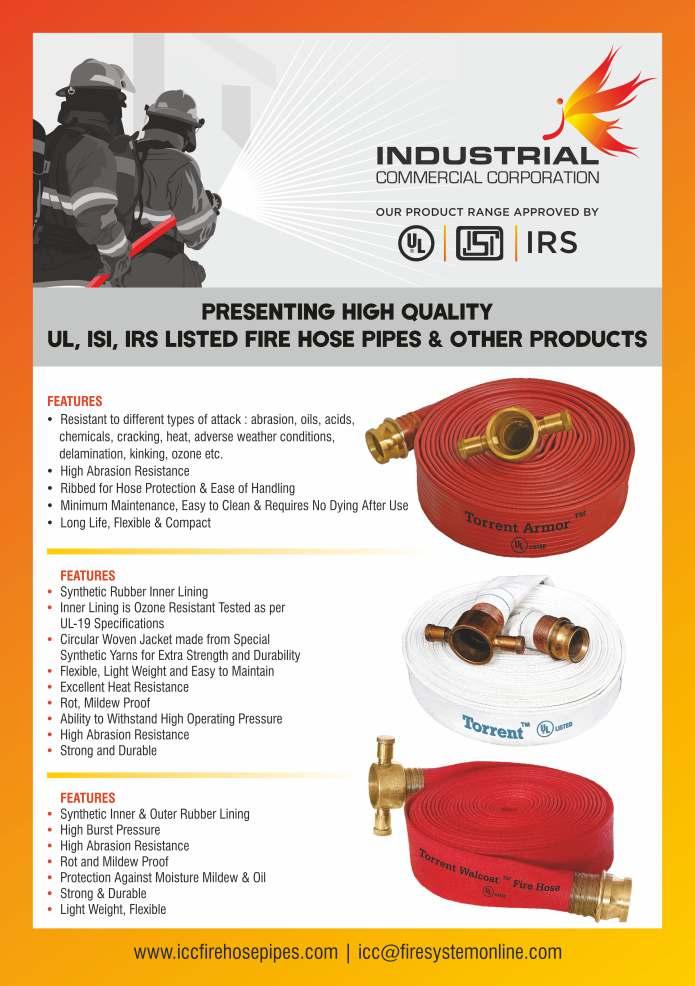
3 minute read
of Traffic Management (Hikvision
Procedures for employees who stay behind to continue critical plant operations. Procedures to account for all employees after evacuation. Procedures for employees performing rescue or medical duties. Name or job title of employees to contact for detailed plan information. Alarm system to alert workers.
In addition, you must designate and train employees to assist in a safe and orderly evacuation of other employees. You must also review the emergency action plan with each employee covered when the following occur:
Advertisement
Plan is developed or an employee is assigned initially to a job. Employee's responsibilities under the plan changes. Plan is changed.
Must all employers have fire prevention plans?
If you have 10 or fewer employees, you may communicate your plan orally. If you have more than 10 employees, however, your plan must be written, kept in the workplace, and available for employee review. Although employers are only required to have a fire prevention plan (FPP) when the applicable OSHA standard requires it, OSHA strongly recommends that all employers have a FPP. The following OSHA standards require fire prevention plans:
If you have 10 or fewer employees, you may communicate your plan orally. If you have more than 10 employees, however, your plan must be written,
Ethylene Oxide - 1910.1047 Methylenedianiline - 1910.1050 1,3-Butadiene - 1910.1051
Here are the minimum provisions of a fire prevention plan:
List of all major fire hazards, proper handling and storage procedures for hazardous materials, potential ignition sources and their control, and the type of fire protection equipment necessary to control each major hazard. Procedures to control accumulations of flammable and combustible waste materials. Procedures for regular maintenance of safeguards installed on heat-producing equipment to prevent the accidental ignition of combustible materials. Name or job title of employees responsible for maintaining equipment to prevent or control sources of ignition or fires. Name or job title of employees responsible for the control of fuel source hazards.
In addition, when you assign employees to a job, you must inform them of any fire hazards they may be exposed to. You must also review with each employee those parts of the fire prevention plan necessary for self-protection.
Workers' Rights
Workers have the right to:
Working conditions that do not pose a risk of serious harm. Receive information and training (in a language and vocabulary the worker understands) about workplace hazards, methods to prevent them, and the OSHA standards that apply to their workplace. Review records of work-related injuries and illnesses. File a complaint asking OSHA to inspect their workplace if they believe there is a serious hazard or that their employer is not following OSHA's rules. OSHA will keep all identities confidential. Exercise their rights under the law without retaliation, including reporting an injury or raising health and safety concerns with their employer or OSHA. If a worker has been retaliated against for using their rights, they must file a complaint with OSHA as soon as possible, but no later than 30 days.
How can I get more information on exit route safety?
For more detail on exit routes and related standards see Exit Routes, Emergency Action Plans, and Fire Prevention Plans in Title 29 of the Code of Federal Regulations (CFR) 1910.33-39; and OSHA Directive CPL 2-1.037, Compliance Policy for Emergency Action Plans and Fire Prevention Plans. In addition, employers who comply with the exit route provisions of the National Fire Protection Association's 101-2009, Life Safety Code, or the exit provisions of the International Fire Code, 2009, will be considered in compliance with the OSHA requirements for exit routes.
















